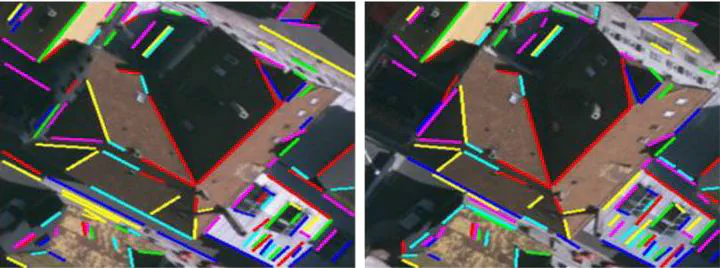An adaptive feature region-based line segment matching method for viewpoint-changed images with discontinuous parallax and poor textures
Feb 1, 2023·
,
,
,
,
 ,
·
0 min read
,
·
0 min read
Min Chen
Wen Li
Tong Fang
Qing Zhu
Bo Xu
Han Hu
Xuming Ge

Abstract
Many methods have been proposed to extract line segment (LS) correspondences for images with viewpoint variations. However, the matching performance on images with viewpoint variations is still limited due to the influence of discontinuous parallax and poor textures on images. Existing line segment matching (LSM) methods rarely consider the coexistence of these two situations. This study attempts to address this problem by proposing an adaptive feature region (FR)-based LSM method based on the observation that different FRs are suitable for different image scenes under image viewpoint change. In the proposed method, LSs are paired, and two types of FRs, symmetric FR centered on the line-pair intersection and asymmetric FR with the intersection as a vertex, are constructed for every line pair. The asymmetric FR of a line pair is a subregion of its symmetric FR. And the complement region of asymmetric FR in symmetric FR is called complement FR. To choose a suitable FR for the matching of each line pair adaptively, the asymmetric FR-based feature descriptor similarity and epipolar line-based constraints are combined to determine candidate line pair matches firstly. Then, the candidate matches with similar complement FR-based feature descriptors are considered initial matches and used to construct a topological constraint to check other candidates. Finally, we estimate an adaptive influence region-based local homography for each matched line pair to constrain the matching of unmatched individual LSs. The experimental results on the test images with viewpoint changes show that our approach outperforms the state-of-the-art methods in terms of Recall, matching precision (MP), and F-Measure (reflecting the overall matching performance of Recall and MP). Especially, it improves the average Recall and average F-Measure of the best method among the comparison methods by 45.20% and 25.83%, respectively.
Publication
International Journal of Applied Earth Observation and Geoinformation